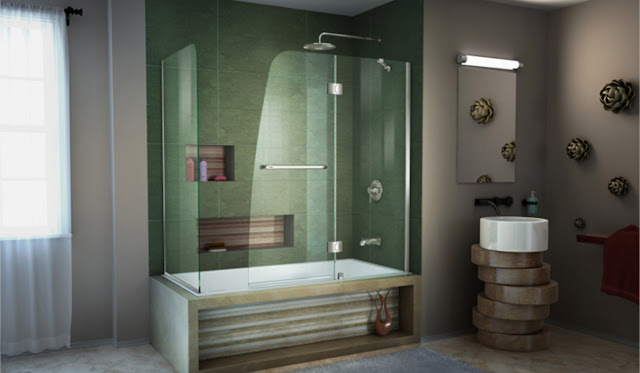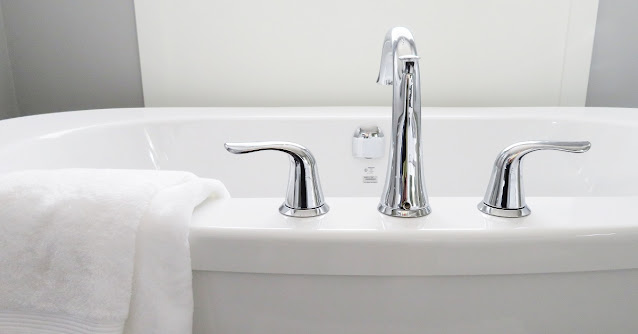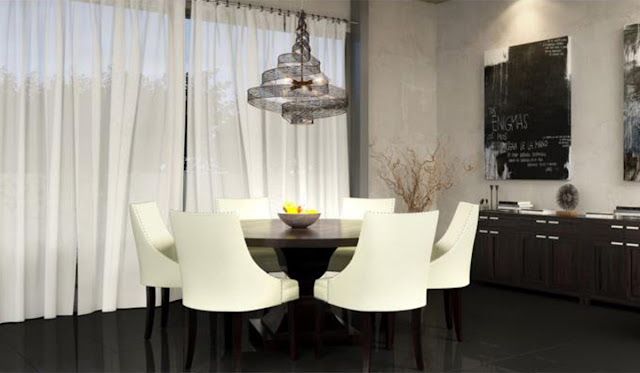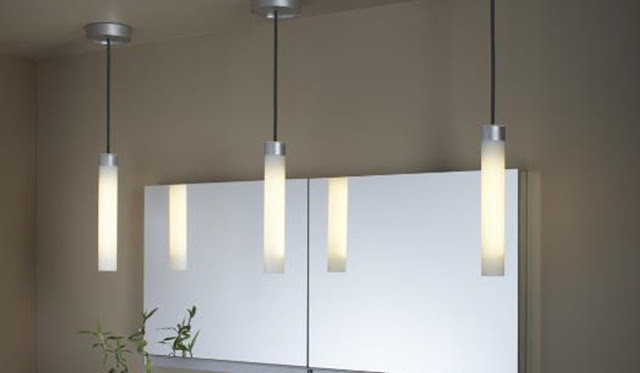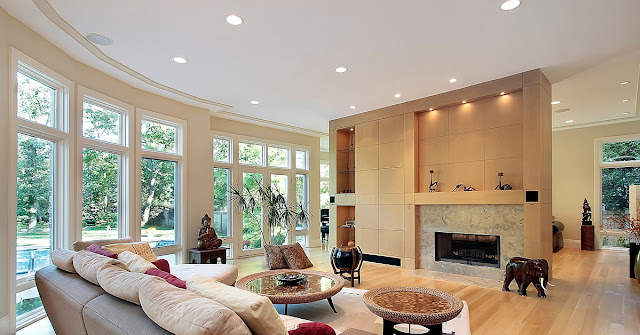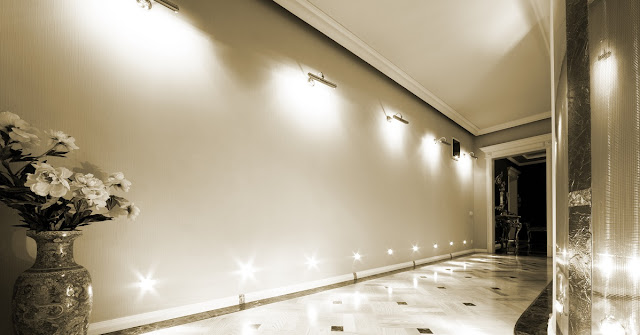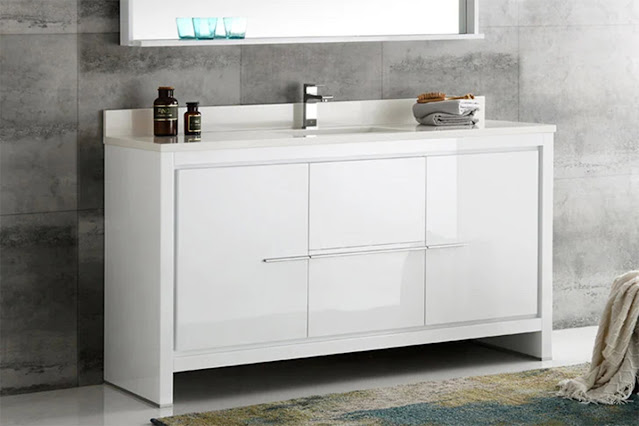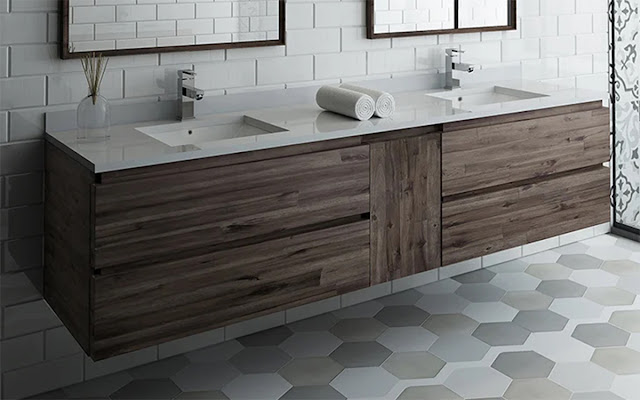
Take a step back and think things through before you select your bathroom vanity. Like any remodel project, you need some planning before you charge ahead.
What’s your budget? Timeline? How big of a vanity will fit in your bathroom? These are just a few of the questions you need to ask yourself.
As experts in all things bathroom design and décor, we’ve put together a bathroom vanity buying guide so you can have a successful vanity update project.
Consider the following.
What’s Your Footprint?
The vanity might be the largest single item in the bathroom, taking up a good chunk of real estate in your bathroom square footage. Starting with your bathroom’s footprint or layout is a key first step. After you have the general measurements of the room, make note of any doors, drawers, or points of entry/exit where you’ll need clearance. Be mindful of the flow of traffic in the room and be sure not to put things in the way that would interfere with that pattern of traffic.
It’s also helpful to take in the visual footprint of your bathroom. This goes beyond its actual measurements to how big or small the space feels. More open bathrooms can take larger vanities, while more enclosed feeling bathrooms are better suited to smaller vanities.
Where’s the Plumbing?
Though you might want to adjust the location of your vanity, check out where the existing plumbing is before doing so. Moving plumbing is an expensive undertaking and adds considerable time to your remodel schedule. Keep costs to a minimum by using the plumbing you’ve already got and finding a vanity to suit that.
On the other hand, if your current plumbing situation causes problems for the layout of the space, is too old, or is insufficient for the size of the space, you’ll need to plan on an update to the plumbing too. This will allow you to select a vanity that fits the bathroom and fix the plumbing to match.
What’s Your Style?
When it comes to style, there are lots of considerations: single, double, wall mount, floor mount, corner, pedestal, etc. It helps to know your design style before starting the vanity shopping process.
Determine Your Design Category
Though there are numberless design styles, they can be grouped into three categories: traditional, transitional, and contemporary. Start with your design category and you’ll have plenty of options.
Your design category will help you narrow down some of your other options too. Modern, or contemporary favors wall mounted, minimalist looks. Traditional styles tend toward floor standing cabinets.
Think About Color
Color does a lot for style. Transitional styles often use a lot of white or gray. Traditional loves richer colors or wood tones. Contemporary tends toward high contrast, high gloss, neutral colors.
Some of today’s design mashups like Modern Farmhouse, Wabi Sabi, or Hygge embrace warmer colors like off whites, beiges, and warm woods. Whatever you choose, color helps you cement the vibe in your space.
Select Format & Size
Sometimes the format you choose is determined by the footprint of your bathroom space. A pedestal sink may be all you have space for in a powder room. A huge double vanity is just the ticket for larger owners’ suites.
Format can also be determined by need. A child’s bathroom calls for a lower vanity while the owners’ suite needs a taller vanity. If you need wheelchair access in the bathroom, a wall mounted vanity is probably your best bet. If the plumbing is in a unique position or the bathroom is really small, a corner vanity is best.
Then again, the format and size might be a matter of preference rather than need. A wall mounted vanity is very trend-forward and suits a contemporary styled bathroom well. Maybe instead of a vanity with a countertop you like a minimalist approach and go for two pedestal sinks instead.
One thing that is definitely a matter of taste is the vanity top and sinks. You have lots of options here including: integrated sink/countertop, undermounted, vessel styles, and top mounted types.
Vanity sizes range from barely 12 inches across to nearly 100 inches. Depths can be 14 inches on up past 26 inches. Heights come in 30 to 36 inches. Look back at your measurements and traffic flow patterns as well as considering more stylistic aspects when you decide on size.
Which Features Do You Want?
What’s more fun than picking out a vanity? Picking out the details to go with it. There are both functional and aesthetic things to consider when selecting knobs, pulls, faucets, and more.
Choose Your Metallic
Most of the time, you’ll be looking at metallics for your faucets and cabinet pulls. There’s no wrong choice here and it’s mostly determined by your taste and your design style.
Cozy styles like Hygge or Farmhouse lean toward matte metallic finishes. Contemporary favors glossy, chrome finishes. Gold is trending in all categories. Look for matte champagne gold tones for a more understated look or bright brass for a more stand out look.
Don’t Forget about Shape
The finishes in your bathroom are like jewelry to a well composed outfit. They give it life and complete the statement it’s making.
Shape is a big player in those finishes. Curving shaped faucets and cabinet pulls have a more organic feel that’s cozy yet dignified. Something more geometric speaks to a more minimal and contemporary vibe.
Creating Emotion
Little did you know that the finishes and features you choose can create a feeling in your bathroom. But it’s true. If you want a relaxing spa-like atmosphere, you’ll choose rain shower heads, body jets, and luxurious hardware and faucets. If you want a no nonsense space that puts function first and stays out of your way design-wise, you’ll choose simple fixtures that meet your needs and are easy to use.
Though there are many things to think about when updating, our buy guide for the bathroom vanity will help you sort through it all and find the vanity that is perfect for you and your space.
Want more tips for buying a vanity? Read on.
.jpg)
.jpg)
